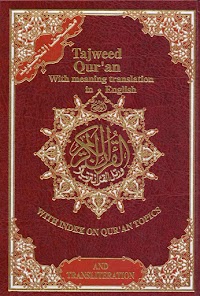Related Posts
- Guidance For Fasting Muslims25 Feb 20171
Muhammad ibn Saleh al-Othaimeen Language: English | Format: PDF | Pages: 22 | Size: 1 MB A reference that simplified all matters pertaining to ...Read more »
- Taqwa: The Provision Of Believers25 Feb 20170
Ibn Rajab, Ibn Qayyim & al-Ghazali Language: English | Format: PDF | Pages: 49 | Size: 1.5 MB According to the earliest sources, compiled ...Read more »
- [Usul Al-Fiqh Al-Islami] Source Methodology In Islamic Jurisprudence25 Feb 20170
Taha Jabir Al ‘Alwani Language: English | Format: PDF | Pages: 41 | Size: 1.5 MB We present this study to those Muslim youth who are searching ...Read more »
- The Islamic Will And Testament25 Feb 20170
Dr. Muhammad Al-Jibaly Language: English | Format: PDF | Pages: 146 | Size: 1.5 MB Writing a will is a religious obligation on every capable M...Read more »
- Explanation Of A Summary Of “Al‐Aqeedatul Hamawiyyah”25 Feb 20170
Sheikh-ul-Islam ibn Taymiyyah Language: English | Format: PDF | Pages: 139 | Size: 1.5 MB One of the works on this subject is his “al-Fatwaa al...Read more »
- Book Of Emaan According To The Classical Works Of Ibn Taymiyah25 Feb 20170
Dr. Mohammed Naim Yasin Language: English | Format: PDF | Pages: 269 | Size: 16 MB The source of all evil is the deviation from the truth and i...Read more »
- Awqaf Magazine ( No.35)19 Mar 20190
مؤلف الكتاب: kuwait awqaf public foundation الناشر: Kuwait Awqaf Public Foundation سنة النشر: 2018 عدد صفحات الكتاب: 28 عدد زيارات الك...Read more »
- كتاب: Tajweed Quran with Meanings Translation and Transliteration in English=مصحف التجويد مع ترجمة المعاني إلى الإنجليزية (ملون)16 Jun 20183
عنوان الكتاب: Tajweed Quran with Meanings Translation and Transliteration in English=مصحف التجويد مع ترجمة المعاني إلى الإنجليزية (ملون)...Read more »





![[Usul Al-Fiqh Al-Islami] Source Methodology In Islamic Jurisprudence](https://blogger.googleusercontent.com/img/b/R29vZ2xl/AVvXsEjTT7fZ87w8hfAT1Nz-oK4_y-RfrnGwwB1s1WwaE2wEuK-td_xxnvqWOdJdmW84DX7oyXMzS6itCXAtjGqEasX-FkfIPq4L2SqSyyXhErAmokYCDqxVaGui8U_r-vHw7RXMutu1tbu0K7_9/w200/remembrance-after-obligatory-prayers.jpg)





Post a Comment
EmoticonClick to see the code!
To insert emoticon you must added at least one space before the code.